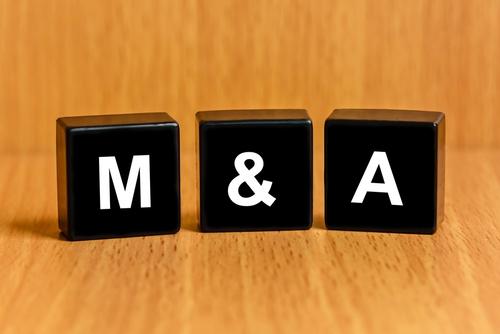This article is written by Nikhil Dash pursing Diploma in M&A, Institutional Finance and Investment Laws (PE and VC transactions) from LawSikho. Nikhil is working with Logos Property Group.
Background of Takeovers
Takeovers in the parlance of Mergers and Acquisitions can take two forms –
- Hostile Takeover
- Acquisition
While the terms Takeover and Acquisitions are sometimes used interchangeably they are more nuanced in their application. A Takeover signifies that an acquirer company has taken over a target company without taking existing owners of the target company into full confidence. On the other hand ,Acquisition signifies a definite arrangement and common ground between the acquirer company and the target company’s respective owners.
In the context of the afore mentioned topic, it is attempted to list down three examples in either of the above without any preference or prejudice to either of the above categories. In each example that is presented as under, three areas of the deal are further elaborated – a) Deal outline, b) Major Bidders, c) Bid Process & Outcome and, d) Concluding remarks.
Example-1 – Jaguar Land Rover
Deal outline
Ford Motor Inc, USA had acquired the iconic British Brands of Jaguar and Land Rover during 1990’s with an aim to enter European markets and to acquire synergies to compete with large German car brands, who were gaining significant market share in the US car market. The integration of these brands into Fords ecosystem proved to be time taking with more than a decade of efforts and cash expenditure to turn around the design and operations of the British classical brands. Ford had to and continues to own, various liabilities pertaining to the union of these companies and legal strictures of the UK business environment’s labour policies.
At the turn of the century and the initial years of the era leading up to the Financial crisis, Ford took the ultimate decision of selling of the iconic British brands to generate much needed cash. Amongst other things, Ford required the cash to improve its overall Balance sheet and develop the core Ford brands. It was around July 2007, when formal bids were floated by Ford inviting various tenders for Jaguar and Land Rover.
Major Bidders
The bidders for the bid were divided into two categories, namely, Financial and Strategic. The Financial bidders were backed by Private Equities and were looking to acquire the company with a perspective of turning around before exiting to a Strategic Inventor within a defined time-frame. Strategic bidders were existing car manufacturers who wanted to bring these brands into their folds and gain synergistic benefits from the acquisition. The following were the key bidders –
- TPG –Private Equity
- Ripplewood holdings – Private Equity
- Mahindra and Mahindra – Car Manufacturer
- Tata Motors – Car Manufacturer
Bid Process & Outcome
The various facets of the bid included due diligence by the participants, presentation of strategic plan to existing owners, employees & unions, negotiations and approvals. It gradually became clear that the UK ecosystem of Employees, Unions, Vendors and Dealers etc. did not favour a Private Equity buyer. Hence the choice fell between Mahindra and Mahindra and TATA motors. The Indian business groups were very well positioned and eager to impress the seller to acquire the brands. At a time when the developed world was reeling under the financial crisis the Indian companies sensed growth opportunities in the developed world to be pursued along with marquee brands on the table.
Mahindra and Mahindra Ltd was represented by Mr Anand Mahindra, Chairman of the Mahindra group during this transaction. The biggest drawback of this firm was that at the time of the deal, its size was smaller than that of the target. This gave rise to questions over usefulness of risk mitigation strategies that could arise out of inability to support legal and financial obligations from a lower Balance sheet in a low growth scenario.
Tata Motors Ltd was represented by Mr Ratan Tata, Chairman of the Tata Group. The advantages of this company was its ability to leverage its large group whose business houses existed in almost every corner of the world. The group had sufficient financial depth to tide over perceived risks in a low growth scenario. Hence obtaining acquiescence from all stakeholders proved to be easy.
Concluding Remarks
In March 2008, Tata Motors and Ford Motors entered into a definitive agreement for the Purchase of Jaguar Land Rover. The deal was based on an all cash transaction with a value of US $ 2.3 Billion approximately. It was also agreed that the Ford Motor Company will continue to own the Pension plans at an approximate value of US $ 600 Million.
Example-2 – Satyam
Deal Outline
In the January of 2009, Satyam Computers, one of the premier IT companies in India was embroiled in tax and account fraud worth thousands of crores. This led to the immediate arrest and suspension of its founders, board and the executive team. Government of India and SEBI appointed a neutral board to take stock of the situation and cooperate with the authorities to uncover the true damage and lead the beleaguered organization to change its ownership and strategic direction through the sale of approximately 46% of the privately held shares of the company. This new board led by eminent personalities like Mr Deepak Parekh organized for due auction of the shares of the company after obtaining due clearances from investigative agencies, courts and under the directions of SEBI.
[While this case is famous in the Indian context and various details have been made available through medial live coverage, the author intends to restrict the write up only to the relevant context. ]Major Bidders
There were four major bidders for the auction, namely
L&T – L&T owned closed to 12% of Satyam’s shares and was widely considered as the frontrunner to the bid. There were significant synergies with existing business of L&T Infotech, the unlisted IT arm of L&T group. However L&T appeared to be circumspect of the fact that key clients like Meryl Lynch and many important employees have already left Satyam Computers.
Tech Mahindra – The Mahindra and Mahindra group was keenly interested on acquiring Satyam Computers. However it wanted to raise capital for the acquisition since existing cash on its books were not sufficient. Here also the concern of acquiring a low performing asset minus key clients and with a large employee pool as a liability was the key concern.
Wilbur L Ross & Co – A private equity based out of US, many considered it to the dark horse in this race. Wilbur Ross & Co has been in the business of acquiring sick companies and turning them around with a successful track record from as early as 1970’s. In India, it had already acquired a portion of Spice Jet around 2008.
Cognizant Technology Solutions – This wholly owned Dun & Bradsheet company was founded jointly with Satyam Computers in 1994. At its core, CTS and Satyam were complimentary to each other in case of Geography, Industry and Solutions. It was widely speculated that this bid was jointly carried out with Wilbur L Ross & Co.
Bidding Process & Outcome
The government appointed board of Satyam Computers conducted the interview with prospective bidders and organized the auction to identify the highest financial bidder for the company. This whole exercise was carried out under the direct supervision of a retired Chief Justice of India. As the bid progressed, it transpired that actual liabilities of Satyam could be higher that USD $1 Billion. This made most of the bidders revise their positions to the conservative best. While CTS and L&T backed out at the last moment, Wilbur Ross bid at Rs 20/- per share price. Sensing opportunity and a synergistic value to enter into the IT domain, Mahindra group went in for a bid of Rs 58/- per share price ! Since it was the highest bidder by far, they were eventually awarded and Tech Mahindra declared as the rightful owners of the erstwhile Satyam Computers.
Concluding Remarks
At the moment of the bid it was generally concluded that Tech Mahindra overvalued Satyam by quite a margin. However, Mr Anand Mahindra always maintained that Satyam had zero overlap with existing Tech Mahindra business and hence provided the group with an immediate foray into entirely new verticals. In the hindsight one might say that through sheer management prowess the Mahindra group was able to steer the beleaguered Satyam enterprise back to confidence with its client and employee base.
Example-3 – Jabong
Deal outline
The Indian e-commerce spectre has largely been a two way affair, a fight between Amazon and Flipkart on various categories of products ranging from Books, Electronics to Fashion etc. However, during heady days of e-commerce, there were others who made significant progress into several focussed categories, namely Snapdeal – market place, Myntra & Jabong – Fashion and Paytm Mall- Electronics etc. By 2016, Jabong had burned its cash and created sufficient liability for its chief Shareholders, GFG to confirm its plan for an early exit.
Major Bidders
Among major bidders were
Snapdeal – Preferred partner and acquirer for GFG. There were prolonged discussions between both parties spanning several months.
Flipkart-Myntra – Second bidder with a larger cash position.
Bidding Process and Outcome – Snapdeal wanted to acquire a zero-liability asset, hence it wanted to carve out only the assets along with the brand name. Jabong was very popular and both the founders had several common grounds. However, Snapdeal was also limited in its risk appetite and capital raising capabilities. Months of negotiation on the acquisition structure didn’t help the already jittery shareholders of Jabong, the GFG group. Flipkart-Myntra on the other hand were ready to acquire the complete shares of the entity along with any liability that it might have accrued. The offer price was on the lower side but the documentation of the offer was simple and immediately tilted the owners to consider this ahead of Snapdeal’s offer. The deal concluded at a total price of US $ 70 Million in June 2016 between GFG and Flipkart.
Concluding Remarks
While Amazon has largely invested into organic growth in its Indian story, Flipkart has been aggressive on the inorganic acquisition space. The Fashion segment delivers higher margin than that of Electronics, Books etc. Hence the urgency shown by Flipkart to acquire Jabong is remarkable. Jabong is an established brand in the Indian e-commerce space and has a strong customer loyalty.
References
- https://www.tatamotors.com/press/tata-motors-enters-into-definitive-agreement-with-ford-for-purchase-of-jaguar-land-rover/
- https://www.moneycontrol.com/india/stockpricequote/computers-software/techmahindra/TM4
- https://yourstory.com/2016/07/jabong-myntra-flipkart/
Students of Lawsikho courses regularly produce writing assignments and work on practical exercises as a part of their coursework and develop themselves in real-life practical skills.
 Serato DJ Crack 2025Serato DJ PRO Crack
Serato DJ Crack 2025Serato DJ PRO Crack











 Allow notifications
Allow notifications



